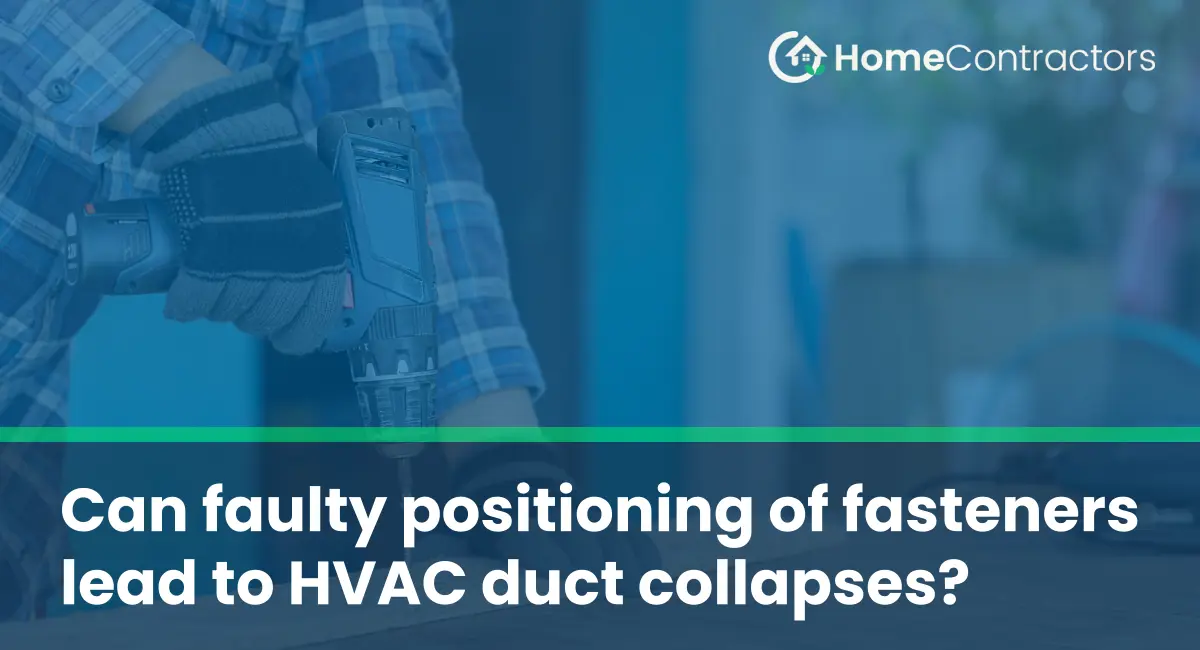When fasteners are not positioned properly or tightened adequately, it can lead to several issues that may ultimately result in HVAC duct collapses. Let’s explore some common problems associated with faulty fastener positioning:
1. Uneven Stress Distribution
Improperly positioned fasteners can cause uneven stress distribution along the seams of HVAC ducts. If the fasteners are not evenly spaced or are located too close to the edge of the duct, it puts excessive stress on certain areas, making them more susceptible to failure. Over time, this uneven stress distribution can weaken the duct structure and lead to collapses.
2. Vibrations and Movement
HVAC systems generate vibrations during operation, and if the fasteners are not secured tightly or positioned correctly, these vibrations can cause movement of the duct sections. Constant movement can loosen the fasteners over time, compromising the overall stability of the ductwork. As a result, the ducts may eventually collapse.
3. Thermal Expansion and Contraction
Temperature changes can cause thermal expansion and contraction of HVAC ducts. Improper positioning of fasteners may prevent the necessary movement of duct sections during these temperature fluctuations. This inability to accommodate thermal expansion and contraction can lead to stress buildup, deformation, and ultimately, the collapse of the ductwork.
4. Increased Air Leakage
Fasteners that are not properly positioned or tightened can result in air leakage from the duct system. Air leakage not only reduces the efficiency of the HVAC system but also puts additional strain on the ducts. The increased air pressure can cause bulging and buckling of the ducts, which can eventually lead to duct collapses.
Preventing HVAC Duct Collapses Due to Faulty Fastener Positioning
To prevent HVAC duct collapses caused by faulty fastener positioning, it is essential to follow proper installation and maintenance practices. Here are some guidelines that can help mitigate the risks associated with fastener positioning:
1. Professional Installation
Always hire a professional HVAC technician who is experienced in duct installation. They will ensure that the fasteners are positioned correctly and tightened adequately, reducing the likelihood of duct collapses.
2. Regular Inspection and Maintenance
Regularly inspect the HVAC ducts for any signs of fastener issues, such as loose or misaligned fasteners. Schedule routine maintenance checks to identify and address any potential problems before they escalate and lead to duct collapses.
3. Proper Fastener Selection
Choose fasteners that are specifically designed for HVAC ductwork. Ensure they meet industry standards and recommendations. This will ensure the fasteners can withstand the environmental conditions and stresses experienced by the ducts.
4. Adhering to Manufacturer Guidelines
Follow the manufacturer’s guidelines for fastener positioning and tightening torque specifications. These guidelines are in place to ensure the performance and longevity of the duct system.
Faulty positioning of fasteners can indeed lead to HVAC duct collapses. It is crucial to understand the importance of correct fastener installation and maintenance to avoid issues like uneven stress distribution, movement, thermal expansion-related problems, and air leakage. By following professional installation, regular inspection, and proper adherence to manufacturer guidelines, the risks associated with faulty fastener positioning can be significantly reduced, ensuring the long-term integrity of HVAC ductwork systems.
